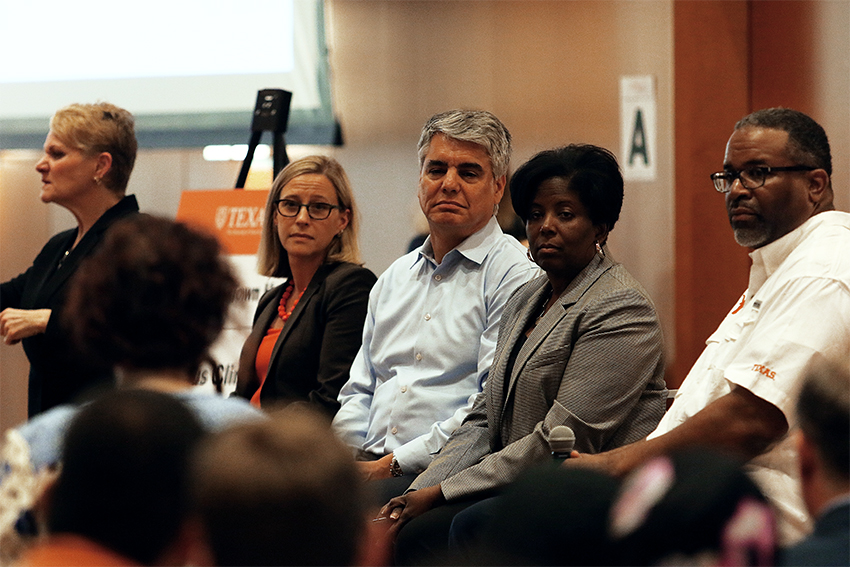Being black at UT is a challenge in and of itself. There are reminders of the Confederate States of America throughout our campus, a legacy that fought to keep us out of the University. So, President Gregory Fenves’ message, announcing the removal of the remaining Confederacy-tied statues from the Main Mall, felt like a significant, yet small, victory.
In the email, Fenves explains that the relocation of the statues was in part prompted by the tragic events in Charlottesville. I commend the University for seeing the racist and hate-fueled rally as it was and reacting accordingly, but I also recognize that the response is only a confirmation of what students of color have been saying for years. So, why does it take a grand display of violence hundreds of miles away to validate the discrimination faced by UT students?
Student disapproval of the statuary’s presence on campus is nothing new. Since the removal of the Jefferson Davis statue in 2015, petitions urging the removal of the remaining statues have made their rounds through social media, one draft garnering more than 2,000 signatures. Despite this, not much has changed. Even after the evaluation by a task force assembled to tackle the issue, the statues remained — forcing students to continue a fight that has raged on since the 90s. But, this isn’t the first grievance posed by students of color that has remained unresolved or poorly handled.
A glimpse of the Town Hall held last February will tell you all you need to know about the state of campus climate on the 40 Acres. There seems to be an ever growing list of discriminatory incidents without proper resolution and repercussion to match. Just last semester, xenophobic and Islamophobic fliers (with racist ones to follow only months later) were found around campus and condemned by the administration, but for all the wrong reasons. In a statement, J.B. Bird, director of media relations, denounced the signage for its placement on unauthorized spaces, but not the hateful rhetoric.
The Hate and Bias Incident Policy, finalized after the Town Hall, was in part created to prevent future inaction by the University in the next racist incident on campus. Unbeknownst to students of color who saw the policy as a positive step forward, it would first be used to combat vandalism targeting fraternities. This very system victimises and remains insensitive toward minorities without worry of punishment. While I do not condone vandalism in any form, the specific mention of the policy in the president’s statement felt like a shift back to square one. It was as if nothing really improved for the people who look like me.
The administration waits until their students are openly threatened to take action, and even then it never seems to create significant change.
The mere existence of black UT students should’ve been enough to get the statues removed, or an acknowledgement of their opposition, at the very least . The University’s mission to “cultivate an inclusive campus culture” should be enough to facilitate real transparency and accountability of University administration to make this goal a reality — before the next incident.
Campbell is an English junior from El Paso. She is an associate editor. Follow her on Twitter @jar_ee.
Editor's note: This column was updated to reflect the timeline of the Hate and Bias Policy's implementation. It was in finalized review stages before the February Town Hall.





















